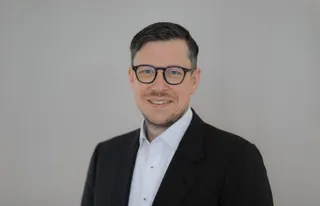How the Dutch foster startups in journalism
For a country with less than 17 million inhabitants the Netherlands have a lot of internationally acclaimed startups in journalism: Blendle for example, a digital kiosk for journalism combining the strengths of iTunes (easy payment a la carte) and Netflix (great curation, discovery, user experience) for journalism. Axel Springer Digital Ventures and the New York Times Company invested 3 million euros in the company from Utrecht. There is Localfocus, a data management platform that makes visualization easy as pie. There is de Correspondent, a crowdfunded news site focused on background, analysis and investigative reporting. There is Dichtbij, a hyperlocal news network that is quite similar to patch with one main difference: It’s profitable right now and working all over the Netherlands.
Why is there so much innovation in digital journalism in the Netherlands? Besides cultural factors and usage patterns in general there is one thing the three examples mentioned above have in common: At some point they got grants for projects from the Dutch Stimuleringsfonds voor de Journalistiek.
This fund was started 40 years ago (September of 1974) as a last resort for journalistic publications in financial trouble, financed by the Ministry of Education, Culture and Science. The goal was to preserve the remaining diversity of the Dutch press publications after years of concentration. Since 2010 the fund is focused on funding new tools, platforms and projects in journalism, anything that all publication could profit from but that is too risky or far out for a single company. In the last years the fund was working with 2,3 million Euros coming per year from the Ministry of Education, Culture and Science. What changed? I asked Pieter Rebel from the Stimuleringsfonds:
Compared to 1974 – how did the overreaching goal of the Fonds change?
The goal changed more and more to stimulating innovation in the field of journalism. We give grants to innovative projects like Blendle. But we also have a project for journalism students with innovative ideas. In a series of masterclasses we teach them how develop great ideas and start their own journalism start-up. In the end, three projects ‘win’ a grant of 20.000 euro. And we give grants for research and do in house research.
What kind of projects and institutions can be funded by the fonds – what are the criteria?
There are three main criteria: innovation, journalism, feasibility.
How many projects are funded with how much money by the Fonds per year?
Our main grant project, persinnovatieregeling, give a maximum of 400.000 euro a year, in two ’rounds’. For an overview of the given grants, check this page.
Who decides?
Our board.
From you personal view: What areas in or around journalism is innovation needed the most now? And where is most happening?
We see innovation in all areas of journalism: tools for journalists, tools for newsrooms, new ways of distribution like Blendle, or the new project of De Correspondent, with which the public can contribute their knowledge to complex issues.
Between 2010 and 2014 the fund supported 78 project with 7,9 Million Euros. The evaluation from 2014 gives a good overview (in Dutch, but you get the pictue) what people worked on and what worked after the financing from the fund stopped. Main points:
- priorities: 27% of the funding went to regional project, 14% to new business models, 14% to new ways of unbundling and personalization of news (page 13)
- sustainability: 33% of all projects went on in the same extent after they were closed for the fund, 7% went on in a greater extent and 10% in a smaller extent (page 22)
- impact: 28% of the projects got third parties to work on what the initiator started (page 26).


